How we used to mock those stuck-in-the-mud opera houses that wheeled out the same moth-eaten production of some box-office favourite decade after decade. Well, Jonathan Miller’s 1950s New York mafiosi version of Verdi’s Rigoletto first arrived on stage in 1982, after The Godfather (Parts I and II) but well before The Sopranos. For ENO at the Coliseum, Elaine Tyler-Hall has now directed its 14th revival. ENO has lately borne the brunt of drive-by funding massacres by the ruthless (and opera-loathing) capi who control the UK arts-subsidy game. We get the appeal of guaranteed crowd-pleasers and seat-fillers to embattled companies.
But here’s the thing: it really works, as fresh, coherent and compelling as ever. Miller’s overarching big idea – the almost abstract patriarchal nightmare of Verdi’s Renaissance Mantua mapped onto its specifically-imagined equivalent in Little Italy – remains thoroughly conceived, and beautifully executed. Don’t forget as well that Miller’s central conceit also depends on a smart, pithy and singable translation by the distinguished poet James Fenton. Aided by a powerful, if not flawless, cast, crisp and tight ensemble work, and an on-form orchestra ferociously conducted by Opera North legend Richard Farnes, younger punters who don’t know Jonathan Miller from Glenn Miller should surely find this an engaging, electrifying – and suitably moving - show.
Since Miller’s take has acquired a reputation for clever gimmickry – notably, “La donna è mobile” as a Fifties jukebox hit – it’s worth stressing that the production, and Tyler-Hall’s discreet renewal, respects the hideous tragedy at the opera’s core. It starts dark and goes darker. Around the brightly-lit and swankily decorated hotel bar where mobster boss the “Duke” holds court with his barman-henchman Rigoletto, hulking tenements glower in the shadows on mean streets. Islands of fake glamour, achieved through violence and extortion, burn amid the gloom of poverty and fear. The vision of designers Patrick Robertson and Rosemary Vercoe still compels, with the West Side Story-style prison-like geometry of wire fences and fire-escapes enriched – especially in the third act – by telling allusions to the spotlit abysses of urban solitude painted by Edward Hopper.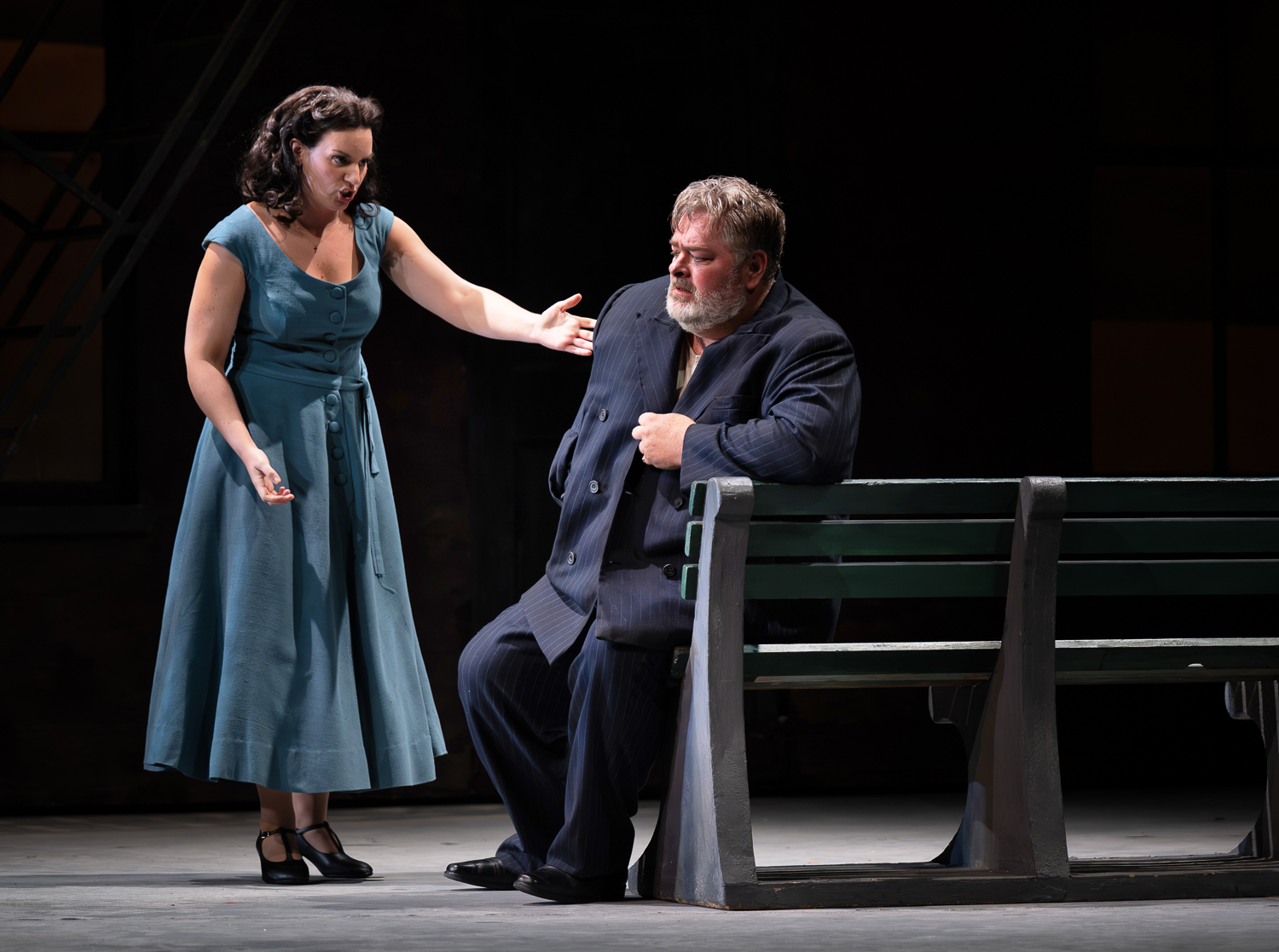 Meanwhile, the sacrifice of Rigoletto’s daughter Gilda – abducted and raped by the boss she fantasised as a lover – proceeds with the fully Shakespearean pity and terror it deserves (pictured above: Robyn Allegra Parton with Weston Hurt). For all its visual, and historical, precision, this version never distracts from the astonishing music that propels the piece: a revolutionary anti-opera opera, where gloriously tuneful numbers embody only delusion, hatred or deceit while truth rasps and cries in rugged simplicity.
Meanwhile, the sacrifice of Rigoletto’s daughter Gilda – abducted and raped by the boss she fantasised as a lover – proceeds with the fully Shakespearean pity and terror it deserves (pictured above: Robyn Allegra Parton with Weston Hurt). For all its visual, and historical, precision, this version never distracts from the astonishing music that propels the piece: a revolutionary anti-opera opera, where gloriously tuneful numbers embody only delusion, hatred or deceit while truth rasps and cries in rugged simplicity.
In the opening party tableau, and later, the chorus move with a purpose; there’s little aimless milling. We sense the allure both of this wood-and-chrome Manhattan sophistication, and of the brute force barely concealed behind it: “made men” play Mad Men. The onstage band integrate well – complete with obligatory visual gag about machine guns in violin cases – as, behind the bar, Weston Hurt’s white-jacketed Rigoletto (pictured below) imposes a wisecracking authority despite his withered arm (rather than hunched back). As the Duke, Yongzhao Yu gave a wheedling, petulant quality to the casual misogyny of “Questa o quella”: consistent with his seedy characterisation here, but unlikely to satisfy those who crave a more plausible seducer in the part. 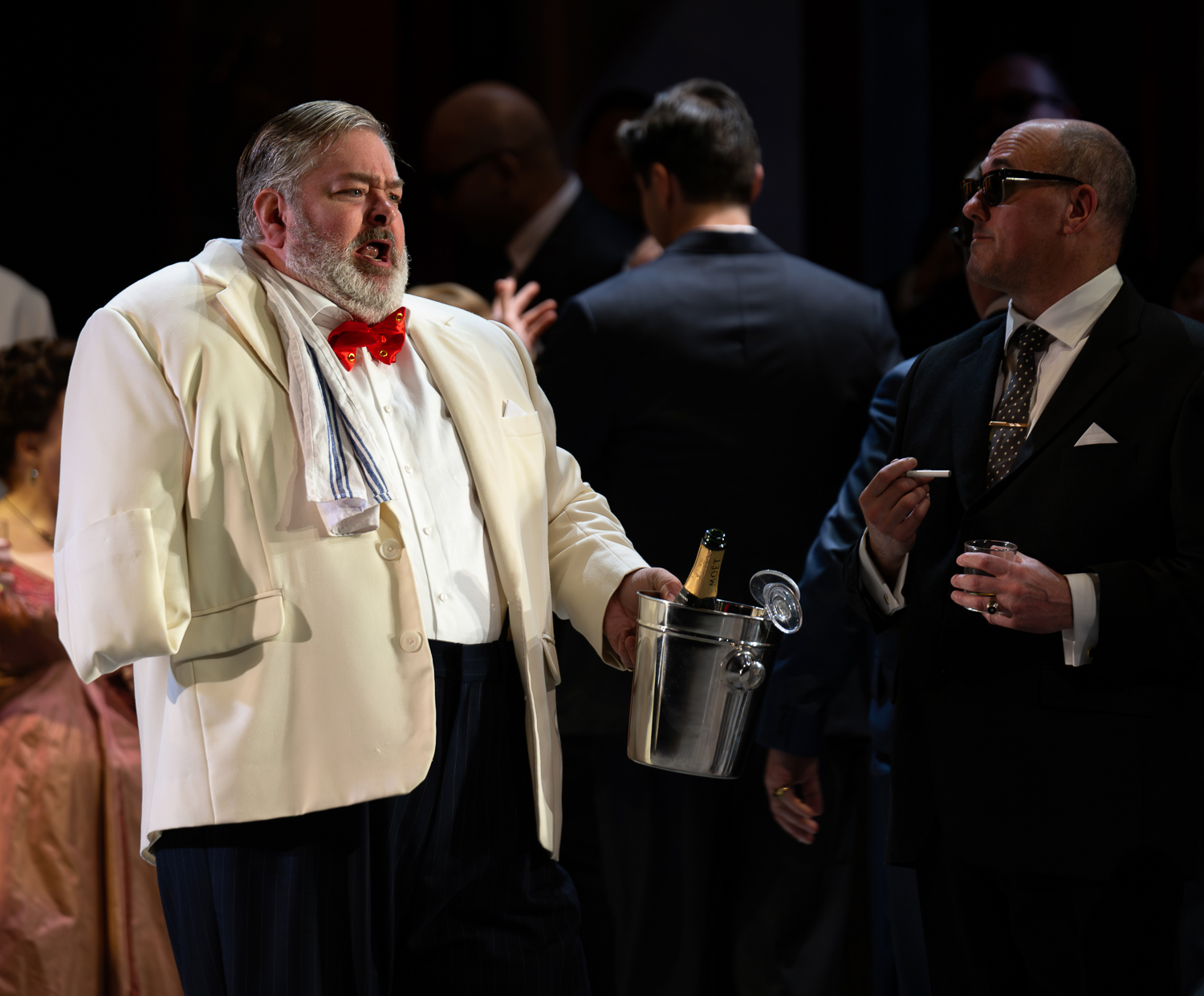 As the humiliated Monterone, ENO veteran David Kempster charged his curse on the Duke and Rigoletto with a chilling fury. Burly, stately, even fearsome, Hurt’s uber-bartender provided the muscle – verbal and physical – to back up the Duke’s rather weedy entitlement. You have to perceive Rigoletto as a nasty piece of work for his excruciating future ordeal to make sense. With Hurt, we did. Baritone Patrick Alexander Keefe, as mobster Marullo, impressed with his sinister suavity. Indeed, the secondary roles shone. And none more so than William Thomas’s hit-man Sparafucile: a classy killer down to the lowest depths of his brushed-velvet bass in the great exchange where Rigoletto perceives his kinship with the hired assassin (“I kill a man with laughter”).
As the humiliated Monterone, ENO veteran David Kempster charged his curse on the Duke and Rigoletto with a chilling fury. Burly, stately, even fearsome, Hurt’s uber-bartender provided the muscle – verbal and physical – to back up the Duke’s rather weedy entitlement. You have to perceive Rigoletto as a nasty piece of work for his excruciating future ordeal to make sense. With Hurt, we did. Baritone Patrick Alexander Keefe, as mobster Marullo, impressed with his sinister suavity. Indeed, the secondary roles shone. And none more so than William Thomas’s hit-man Sparafucile: a classy killer down to the lowest depths of his brushed-velvet bass in the great exchange where Rigoletto perceives his kinship with the hired assassin (“I kill a man with laughter”).
But it’s the scenes between Gilda and Rigoletto that make this revival truly glow, and sing. As she scampers up and down the fire-escapes, Robyn Allegra Parton looks, and sounds, suitably flighty and wilful: not the fragile porcelain angel of Rigoletto’s fatherly dreams. The airborne coloratura elegance of her soprano in its upper reaches is contested by a grainier, more fleshly quality lower down: as if woman and fantasy-doll had two voices, singing at loggerheads. That absolutely fits the role. For his part, Hurt balanced enormous pathos conveyed in long, carefully sculpted vocal lines with headstrong paternal conceit: as so often in this opera, heartfelt beauty can mask the drive to confine and command.
Disguised as a baseball-jacketed student as he woos unwitting Gilda, Yu’s Duke (pictured below with Gilda) has a harsh and piercing tone that brings with it heft but little charm. There’s much power, presence and spinto-style agility with this tenor but an abrasive edge, and inconsistent diction, that can detract from his rakish credibility – even if it suits the repulsive character. In her “Caro nome”, Parton quavered and warbled deliciously on the stairs. Her topmost notes floated precisely through the warm night air, but we never forget that ravishing virtuosity serves a fatal, ugly lie. As we learn when the Duke’s ladder-toting thugs nimbly manage the kidnap. 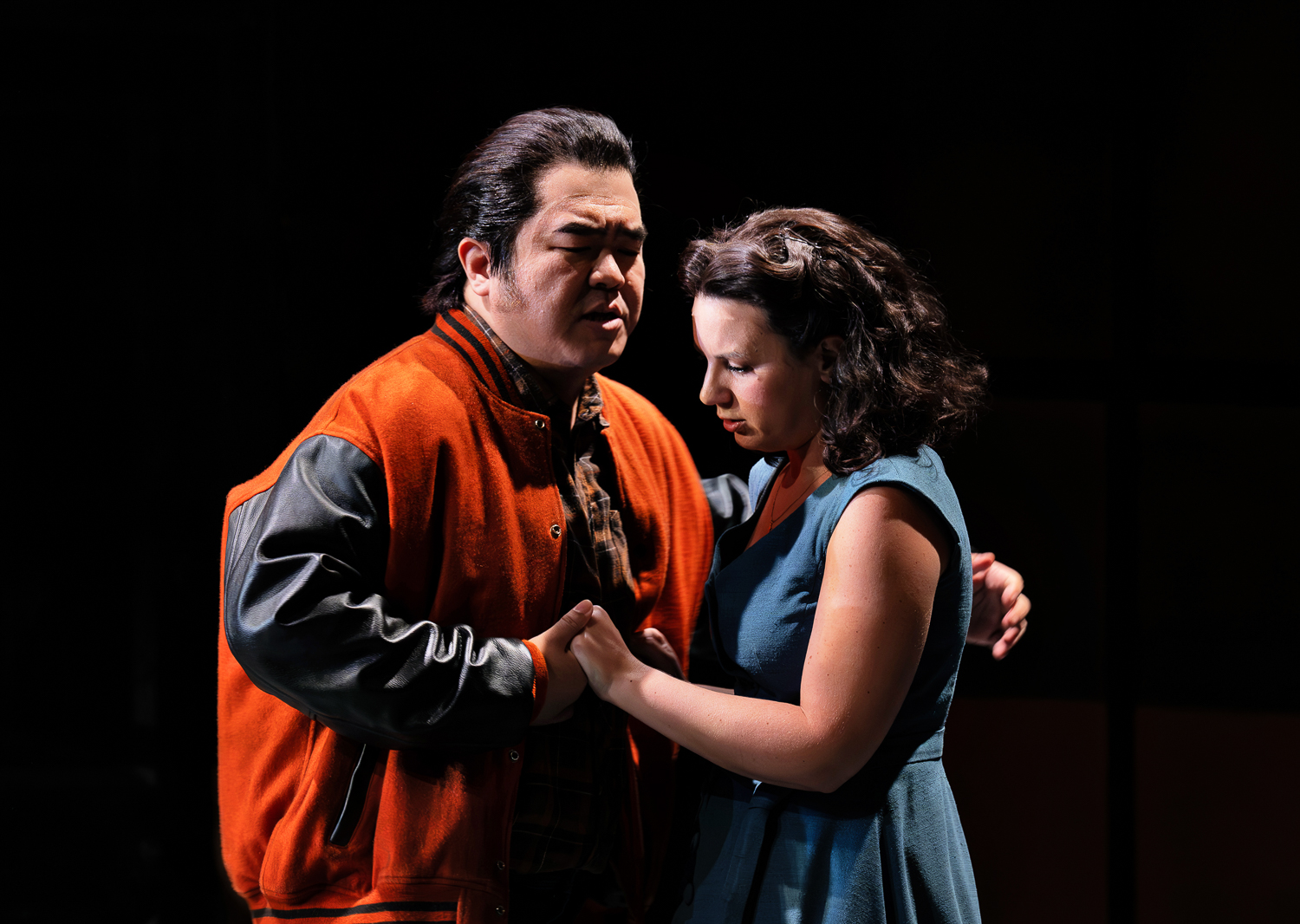 In his second-act soliloquy, Yu brought home the self-pity behind the Duke’s pseudo-romantic obsession. Again, a rather musclebound quality in the delivery deprived it of redeeming grace. Appropriate acting, maybe, rather than flawed singing: but at some point this entitled brute should properly show us why Gilda falls for him. Amid the hotel’s phalanx of bruisers, however, Rigoletto’s collapse into despair wrung the heart as he laments the loss of “all that I have in the world”. Again, the first-rate ENO chorus don’t just fill the stage but act: notably, as they turn their collective backs on their abandoned buddy. Reunited with Gilda, Hurt and Parton aced their duet, both vocally assured and dramatically astute.
In his second-act soliloquy, Yu brought home the self-pity behind the Duke’s pseudo-romantic obsession. Again, a rather musclebound quality in the delivery deprived it of redeeming grace. Appropriate acting, maybe, rather than flawed singing: but at some point this entitled brute should properly show us why Gilda falls for him. Amid the hotel’s phalanx of bruisers, however, Rigoletto’s collapse into despair wrung the heart as he laments the loss of “all that I have in the world”. Again, the first-rate ENO chorus don’t just fill the stage but act: notably, as they turn their collective backs on their abandoned buddy. Reunited with Gilda, Hurt and Parton aced their duet, both vocally assured and dramatically astute.
In the final act the set’s fractures of light and dark, inside against outside, prove their worth. The Duke attempts to woo Sparafucile’s sister, and assassin’s bait, Maddalena behind the plate glass of a street bar (as in Hopper’s “Nighthawks”) while the vengeance-seeking Rigoletto and Gilda lurk on shadowed lamplit sidewalks. Amy Holyland (pictured below) lent the sister more sympathetic dignity than usual. The jukebox “Donna” makes sense for this trivial, adolescent seducer – as does the mighty quartet, sharply divided between the inside and outside pairs but formidably sung. The macrocosmic storm in the heavens to match tumult on earth – further shades of Verdi’s never-to-be-written King Lear – flashed and thundered effectively as Rigoletto learns that his revenge plot has gone horrifically awry. Once more the fluttering flutes that signify Gilda enhanced the satisfying sound-world stitched by Farnes in the pit. His richly coloured woodwind, brass and string voices gathered, when required, into some majestically ominous tutti.
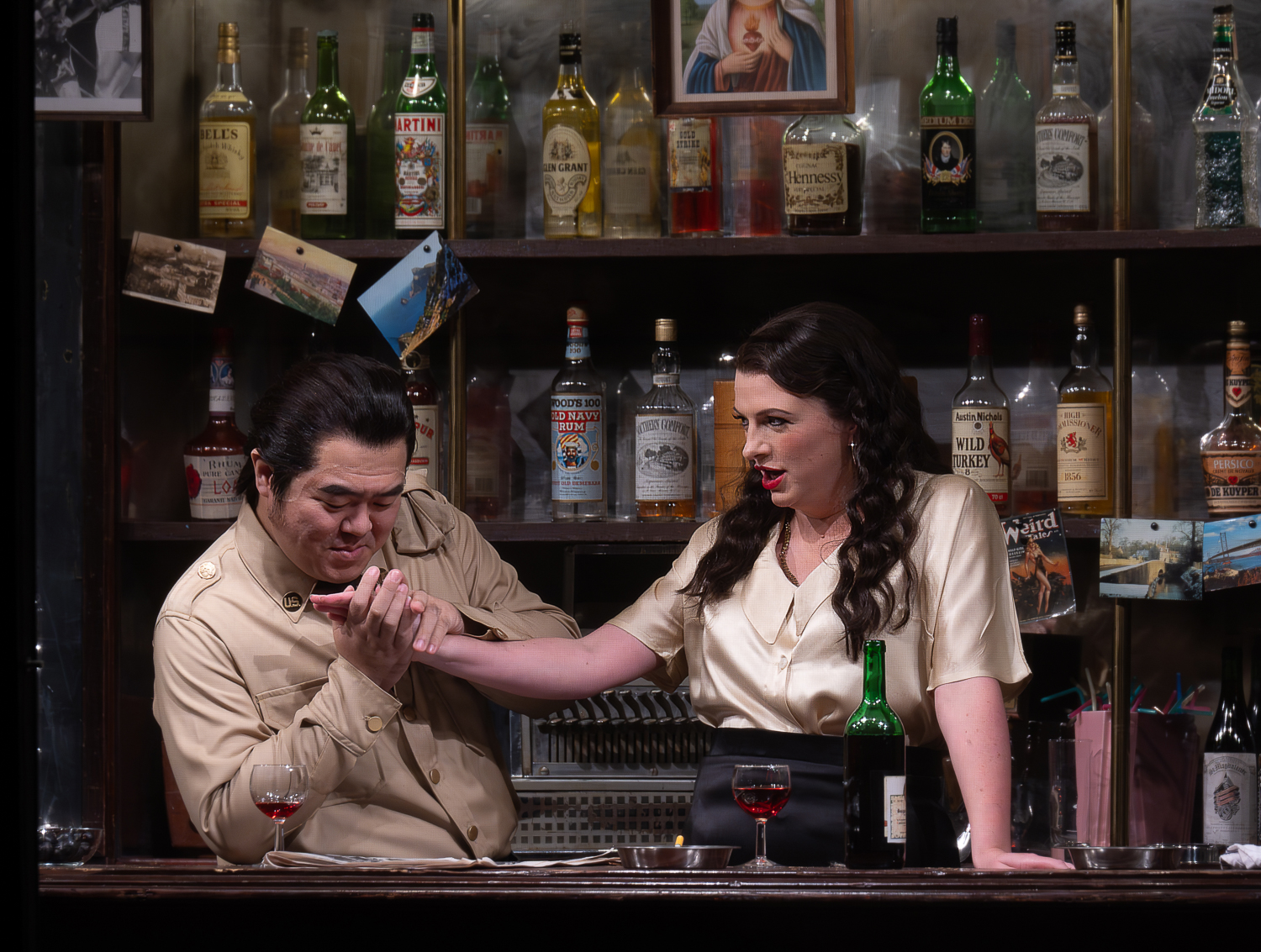 When he discovers what’s inside the sack of sorrow, Hurt’s stunned restraint as he agonises over the dying Gilda felt authentic: after a work stuffed with the beautified passions of delusion or deceit, the real outcome of controlling male fantasies strikes him into a sort of petrified humility. Miller’s depraved mafia chic still looks, and sounds, convincing. Just as important, In Verdian terms, it still rings true.
When he discovers what’s inside the sack of sorrow, Hurt’s stunned restraint as he agonises over the dying Gilda felt authentic: after a work stuffed with the beautified passions of delusion or deceit, the real outcome of controlling male fantasies strikes him into a sort of petrified humility. Miller’s depraved mafia chic still looks, and sounds, convincing. Just as important, In Verdian terms, it still rings true.



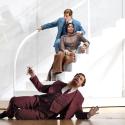






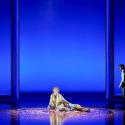


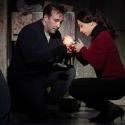
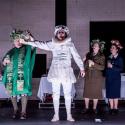
Add comment